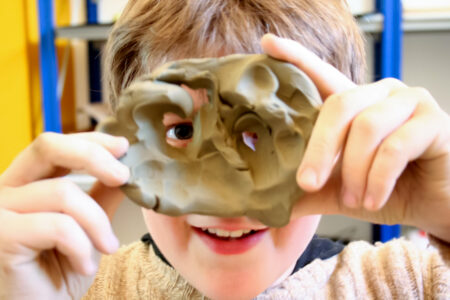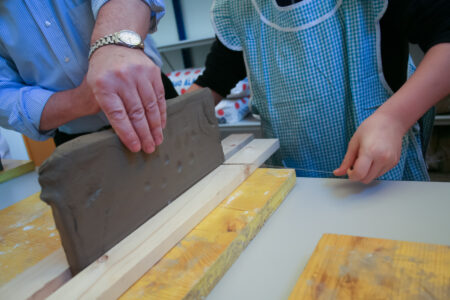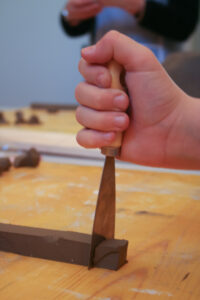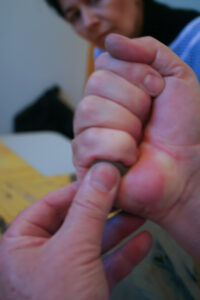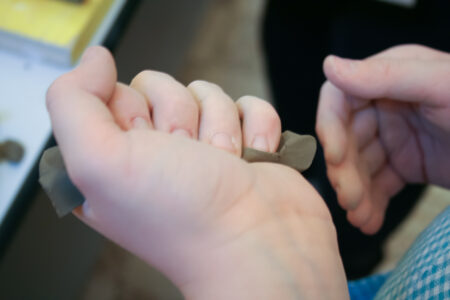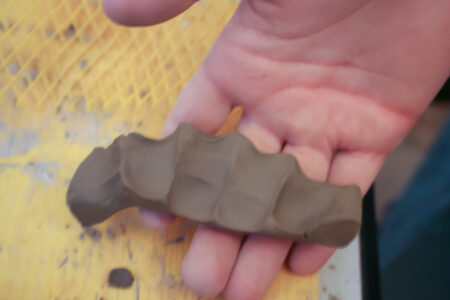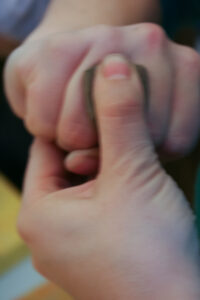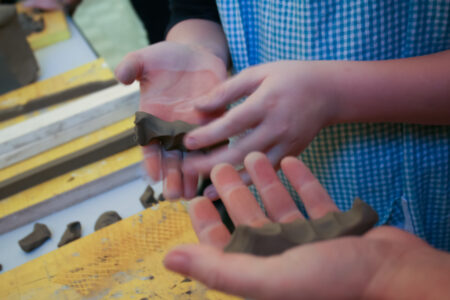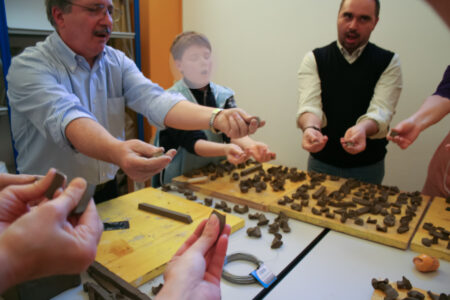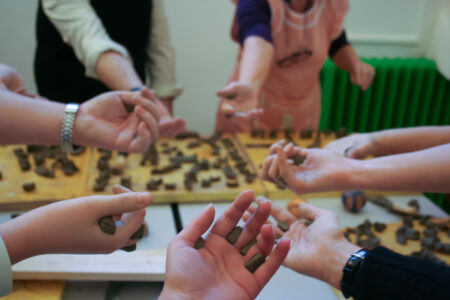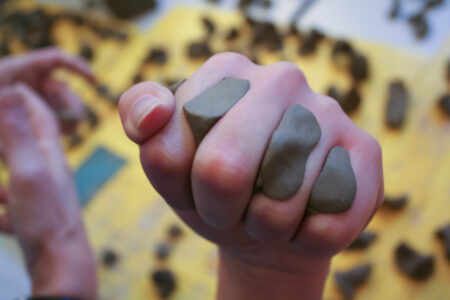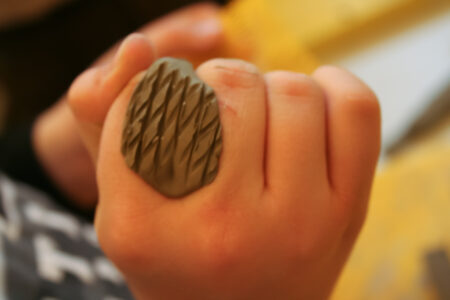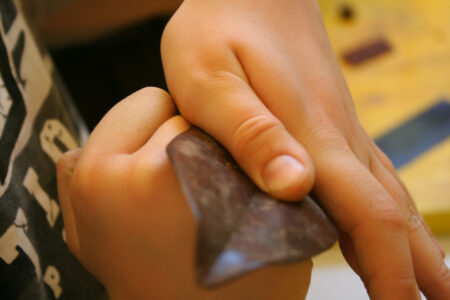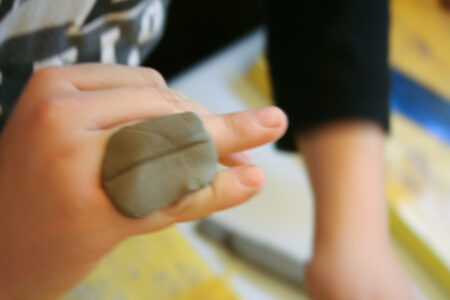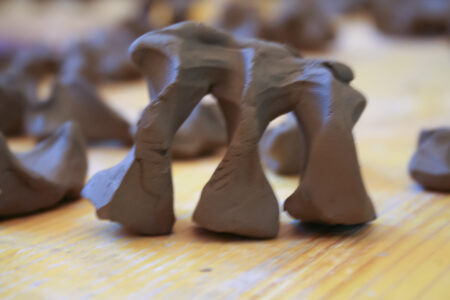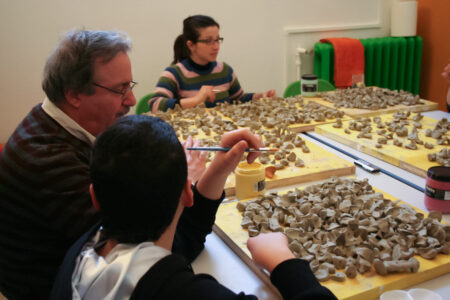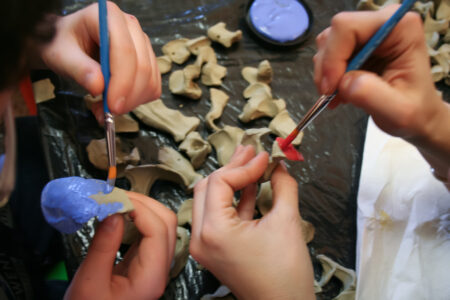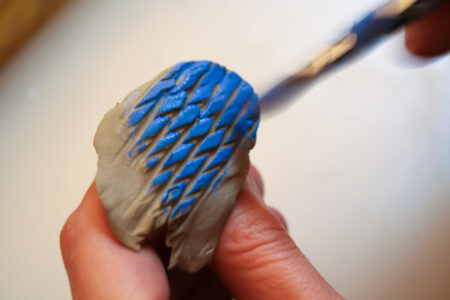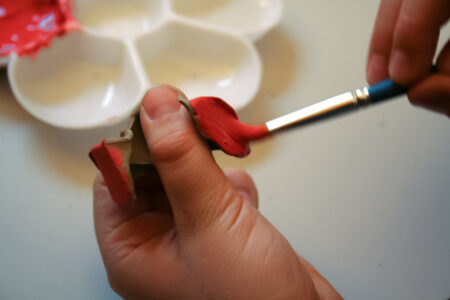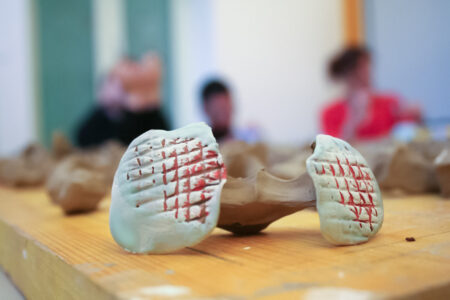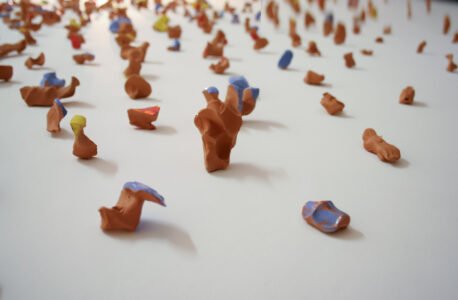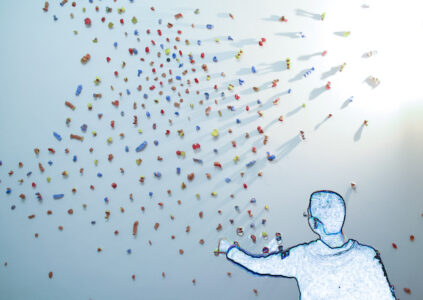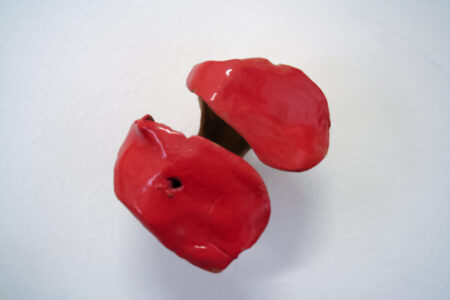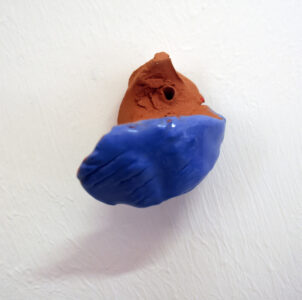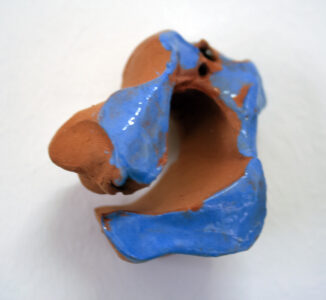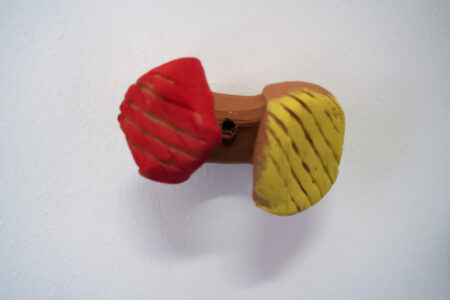A therapeutic journey enhancing techniques of self expression through the use of clay.This workshop took place in the premises of the pediatric department of a hospital, in a particular section that deals- with the victims of bullyism, and saw the collaboration of teachers, trainees and technicians of the course in Theory and Practice of Art Therapy of the Academy of Fine Arts of Brera. Clay was chosen not only for its versatility – it is caressing at the touch and open to all deformations and transformations – but also for its anti-stress qualities and because it is non-toxic and able to welcome the breath of life of plastic creation.
The clay and the hand, the other and I, to hear and to listen, to touch and to be touched, to clench and to be grasped, to impress and to be impressed: these are some of the metaphors that relate, the relationship between the material and its user. The hands’ seeds were made by clinching small cubes of clay in the palm of the hand, and deformed by the variation of the pressure applied on them and by their disposition, firstly in the right hand, secondly in the left hand, and finally with both (fig. 1 fig. 2 fig. 3 fig. 4 fig. 5). In this first phase of the project, participants undertook all operations with their eyes closed (fig. 6 fig. 7 fig. 8 fig. 9 fig. 10) so that they could give full attention to the feeling of the material in their hands; only at the end of this process, when the eyes disclose and the fists loose their grip, the gaze unveils with marvel the unexpected creation of tactile sensibility. To put one’s body at the core of the action of different types of sculpture is necessary to facilitate the therapeutic process; to use parts of the body as materials and creative equipment favoured the increase of self-belief for all participants to the project. Everyone can leave a non-fading sign on clay. This material can behold moods, emotional fragility, lack of physical strength, even a disarming fear of physical interaction, or on the other hand a conscious grip on one’s own strength, passion, and confidence in their own ability: all these feelings are vivid and strong in the hands’ seeds.
During the laboratory activity the first shapes of seeds realised by the participants remained entirely within their palms, as to suggest the idea they had only just been seeded. The following seeds, that were obtained by putting much greater pressure on the clay, escaped the grip of the palms and spread between the fingers, to suggest the idea of a seed that germinates from their Mother Earth-like hand (fig. 11 fig. 12 fig. 13 fig. 14 fig. 15 fig. 16). Drying up, clay loses most of the water it contains, and becomes dry, rigid, fragile and of grey-green shade (fig. 17); when fired, it transforms into a hard, resistant material and gains the typical red-brick colour. To obtain a seed with shiny, coloured parts, clay has to be treated with ceramics paint before firing (fig. 18 fig. 19 fig. 20 fig. 21) and finished off with many coats of crystallizing varnish; it then has to be fired at a temperature of 950°C (slip, or engobe). The firing and the colour have a very strong symbolic connotation: firing highlights the transformative action of a material that goes from being soft to very hard; colour brings to life what the material hid or held underneath before the process, giving t life to the seeds. The sowing was simulated firstly on the flat pavement floor, imitating the wide gesture of the sower; the composition obtained was later installed by all participants – at different times – onto the laboratory’s bigger wall (fig. 22). More congested areas alternated with emptier ones, giving to the whole space a sense of quietness, movement and dynamism all at the same time. The beauty of this collective work transformed the space, making it more harmonious and welcoming (fig. 23 fig. 24). All participants – after the completion of the work – felt encouraged to continue this experience (fig. 25 fig. 26 fig. 27 fig. 28 fig. 29).
